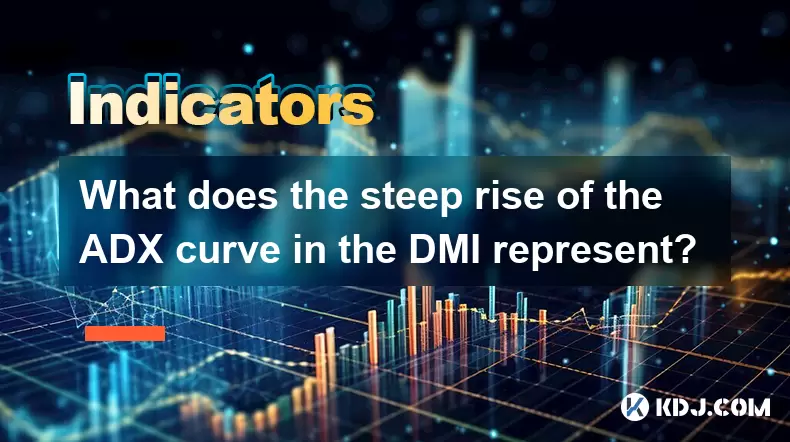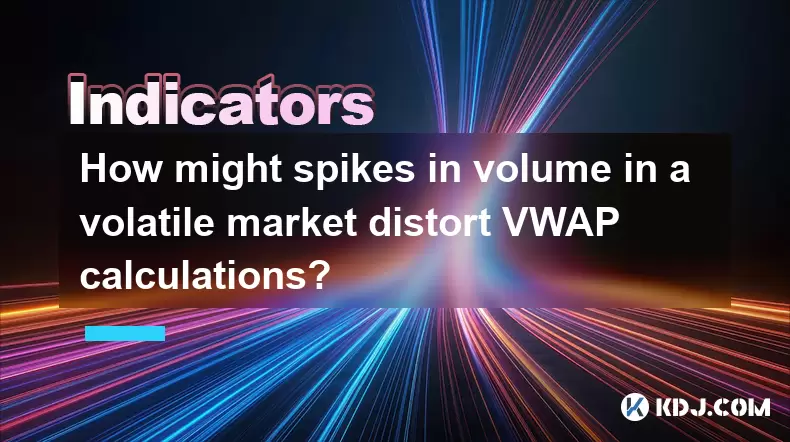-
 Bitcoin
Bitcoin $117700
-0.03% -
 Ethereum
Ethereum $3805
0.49% -
 XRP
XRP $3.098
-1.00% -
 Tether USDt
Tether USDt $1.000
0.03% -
 BNB
BNB $792.8
-1.72% -
 Solana
Solana $177.9
-1.95% -
 USDC
USDC $1.000
0.02% -
 Dogecoin
Dogecoin $0.2202
-1.55% -
 TRON
TRON $0.3278
-2.92% -
 Cardano
Cardano $0.7641
-2.43% -
 Hyperliquid
Hyperliquid $42.21
-2.68% -
 Sui
Sui $3.758
-1.58% -
 Stellar
Stellar $0.4080
-3.21% -
 Chainlink
Chainlink $17.75
-0.33% -
 Bitcoin Cash
Bitcoin Cash $591.8
4.96% -
 Hedera
Hedera $0.2561
-3.09% -
 Avalanche
Avalanche $23.34
-4.24% -
 Litecoin
Litecoin $110.7
1.96% -
 UNUS SED LEO
UNUS SED LEO $8.956
-0.01% -
 Toncoin
Toncoin $3.410
0.79% -
 Ethena USDe
Ethena USDe $1.001
0.03% -
 Shiba Inu
Shiba Inu $0.00001288
-1.82% -
 Uniswap
Uniswap $10.07
-2.06% -
 Polkadot
Polkadot $3.807
-2.27% -
 Monero
Monero $308.2
-2.15% -
 Dai
Dai $1.000
0.03% -
 Bitget Token
Bitget Token $4.521
-0.30% -
 Pepe
Pepe $0.00001134
-1.52% -
 Cronos
Cronos $0.1457
0.65% -
 Aave
Aave $274.9
-2.47%
What does the steep rise of the ADX curve in the DMI represent?
A steep rise in the ADX signals strong trend momentum in crypto markets, indicating a shift from consolidation to decisive price movement—use with +DI/-DI crossovers and volume for confirmation.
Jul 30, 2025 at 04:15 am

Understanding the DMI and Its Components
The Directional Movement Index (DMI) is a technical analysis tool used to determine the strength and direction of a trend in cryptocurrency markets. It consists of three primary components: the Positive Directional Indicator (+DI), the Negative Directional Indicator (-DI), and the Average Directional Index (ADX). Each of these lines serves a distinct function. The +DI measures the strength of upward price movement, while the -DI gauges the strength of downward movement. The ADX, on the other hand, does not indicate direction but instead reflects the overall strength of the trend, regardless of whether it is bullish or bearish.
The ADX is derived from the smoothed average of the difference between +DI and -DI over a specified period, typically 14 candles. Its values range from 0 to 100. A reading below 20 generally suggests a weak trend or a ranging market, while a value above 40 indicates a strong trend. However, the most significant insight often comes not from the absolute value of ADX, but from its rate of change—specifically, a steep rise in the ADX curve.
What a Steep Rise in ADX Signifies
A steep rise in the ADX curve signals a rapid increase in trend strength. In the context of cryptocurrency trading, this means that price momentum is accelerating in one direction—either up or down. This surge typically follows a period of consolidation or sideways movement, where the ADX value was low. Once market participants begin to commit capital aggressively, the directional movement intensifies, causing the ADX to climb sharply.
The key interpretation is that the market is transitioning from indecision to conviction. For instance, if Bitcoin has been trading in a tight range for several days and the ADX suddenly spikes from 18 to 35 within a few candlesticks, it indicates that buyers or sellers are gaining decisive control. The steeper the rise, the more forceful the emerging trend. Traders often use this signal to anticipate the start of a sustained move, which can be critical for entering early in a new trend phase.
How to Identify a Valid ADX Surge
To determine whether a rising ADX reflects a genuine trend or a false signal, traders should consider the following conditions:
- Confirm alignment with +DI and -DI: A rising ADX accompanied by +DI crossing above -DI suggests a strengthening bullish trend. Conversely, if -DI is above +DI during the ADX surge, the trend is bearish.
- Check volume and price action: A steep ADX rise should ideally coincide with increased trading volume and clear candlestick patterns, such as breakouts from resistance or support levels.
- Evaluate time frame consistency: The signal is stronger when observed across multiple time frames. For example, a steep ADX rise on both the 4-hour and daily charts increases the reliability of the trend strength signal.
- Avoid whipsaw zones: In highly volatile altcoins, ADX can spike briefly due to sudden price swings that don’t lead to sustained trends. Filtering with moving averages or volatility indicators like ATR helps reduce false positives.
Practical Application in Cryptocurrency Trading
Traders can use a steep ADX rise as part of a comprehensive strategy to time entries and manage risk. Here’s how to incorporate it into a live trading setup on a platform like TradingView or Binance:
- Set up the DMI indicator: Open your chart, navigate to the indicators menu, and search for “Average Directional Index” or “DMI.” Add it to the chart with the default 14-period setting.
- Monitor ADX slope: Use the chart’s drawing tools to add a trendline or use the “slope” function to visualize the rate of change in ADX. A sharp upward angle indicates acceleration.
- Cross-verify with price structure: Look for a recent breakout from a consolidation zone. For example, if Ethereum breaks above a descending wedge and ADX surges past 30, it supports a long entry.
- Place stop-loss orders: Since a strong trend may experience pullbacks, set stop-loss just below the recent swing low (for longs) or above swing high (for shorts).
- Use trailing stops: As the trend progresses, a trailing stop can help lock in profits while allowing room for continuation.
This method is particularly effective in trending markets like those seen during major Bitcoin rallies or altcoin seasons.
Common Misinterpretations of ADX Behavior
A steep ADX rise is powerful, but it is often misunderstood. One common error is assuming that a rising ADX implies a bullish trend. In reality, ADX only measures strength, not direction. A sharp increase can occur during a violent sell-off, which would be confirmed by -DI dominance. Another mistake is entering trades solely based on ADX without waiting for DI line crossovers or price confirmation. This can lead to entering during a false breakout.
Additionally, in low-liquidity altcoins, ADX can spike due to thin order books and large whale trades, creating misleading signals. It’s crucial to assess market context—including news events, exchange inflows/outflows, and on-chain data—before acting on an ADX surge.
ADX Divergence and Its Implications
While a steep rise in ADX typically confirms trend strength, divergence between ADX and price can warn of exhaustion. For example, if price reaches new highs but the ADX curve fails to rise and instead flattens or declines, it suggests that momentum is weakening despite the price move. This bearish divergence may precede a reversal, especially in overbought conditions.
Conversely, if price makes lower lows in a downtrend but ADX starts falling, it indicates diminishing selling pressure. This bullish divergence could signal a potential bottom. Monitoring these patterns helps traders avoid chasing overextended trends.
Frequently Asked Questions
Q: Can ADX predict trend reversals?
A: ADX does not predict reversals directly. It measures trend strength. However, when ADX starts declining after a prolonged rise, it may indicate that the trend is losing momentum, which could precede a reversal—especially when combined with other reversal signals like candlestick patterns or RSI divergence.
Q: What time frame is best for observing ADX spikes in crypto?
A: The 4-hour and daily charts are most reliable for identifying meaningful ADX surges. Shorter time frames like 5-minute or 15-minute charts often produce noisy and false signals due to high-frequency trading and volatility.
Q: Should I trade based solely on ADX?
A: No. ADX should be used in conjunction with other tools. Combine it with DI line crossovers, price action analysis, volume, and support/resistance levels to improve accuracy and reduce risk.
Q: What causes a sudden spike in ADX during low-volume periods?
A: Sudden spikes can occur due to large single trades, exchange-specific issues, or algorithmic liquidations. These are often short-lived and not reflective of genuine market trend strength. Always cross-check with volume and order book depth.
Disclaimer:info@kdj.com
The information provided is not trading advice. kdj.com does not assume any responsibility for any investments made based on the information provided in this article. Cryptocurrencies are highly volatile and it is highly recommended that you invest with caution after thorough research!
If you believe that the content used on this website infringes your copyright, please contact us immediately (info@kdj.com) and we will delete it promptly.
- LYNO Token Presale: AI Arbitrage Revolution in DeFi
- 2025-07-31 05:11:11
- Pepecoin Successors: Can These Cryptocurrencies Make You a Millionaire?
- 2025-07-31 05:50:12
- AML Bitcoin Fraud: Cracking Down on Crypto Crime in the Big Apple and Beyond
- 2025-07-31 04:33:53
- Cardano (ADA) in 2025: Navigating Crypto's Future
- 2025-07-31 03:52:07
- Solana Meme Coin Price Prediction: Will the Frog Outleap the Dog?
- 2025-07-31 03:52:07
- Bitcoin's Bullish Outlook: CryptoQuant's Insights on Futures Market Cooling
- 2025-07-31 03:59:10
Related knowledge

How to use the AVL indicator to confirm a trend?
Jul 31,2025 at 10:25am
Understanding the AVL Indicator and Its ComponentsThe AVL indicator, also known as the Accumulation Volume Line, is a technical analysis tool that com...

How to use the AVL indicator with MACD for better signals?
Jul 31,2025 at 09:22am
Understanding the AVL Indicator and Its Role in Cryptocurrency TradingThe AVL indicator, also known as the Accumulation Volume Line, is a volume-based...

How to identify sell signals with the AVL indicator?
Jul 31,2025 at 07:09am
Understanding the AVL Indicator and Its Core ComponentsThe AVL indicator, also known as the Accumulation Volume Line, is a volume-based technical anal...

What are the best settings for the AVL indicator?
Jul 31,2025 at 10:04am
Understanding the AVL Indicator and Its PurposeThe AVL indicator, also known as the Accumulation Volume Line, is a technical analysis tool used in the...

How does the VWAP line help in identifying overbought and oversold market conditions?
Jul 31,2025 at 05:19am
Understanding the VWAP Line and Its Role in Technical AnalysisThe Volume Weighted Average Price (VWAP) is a critical tool used by traders within the c...

How might spikes in volume in a volatile market distort VWAP calculations?
Jul 31,2025 at 07:40am
Understanding VWAP and Its Core ComponentsVWAP, or Volume-Weighted Average Price, is a trading benchmark that gives the average price a cryptocurrency...

How to use the AVL indicator to confirm a trend?
Jul 31,2025 at 10:25am
Understanding the AVL Indicator and Its ComponentsThe AVL indicator, also known as the Accumulation Volume Line, is a technical analysis tool that com...

How to use the AVL indicator with MACD for better signals?
Jul 31,2025 at 09:22am
Understanding the AVL Indicator and Its Role in Cryptocurrency TradingThe AVL indicator, also known as the Accumulation Volume Line, is a volume-based...

How to identify sell signals with the AVL indicator?
Jul 31,2025 at 07:09am
Understanding the AVL Indicator and Its Core ComponentsThe AVL indicator, also known as the Accumulation Volume Line, is a volume-based technical anal...

What are the best settings for the AVL indicator?
Jul 31,2025 at 10:04am
Understanding the AVL Indicator and Its PurposeThe AVL indicator, also known as the Accumulation Volume Line, is a technical analysis tool used in the...

How does the VWAP line help in identifying overbought and oversold market conditions?
Jul 31,2025 at 05:19am
Understanding the VWAP Line and Its Role in Technical AnalysisThe Volume Weighted Average Price (VWAP) is a critical tool used by traders within the c...

How might spikes in volume in a volatile market distort VWAP calculations?
Jul 31,2025 at 07:40am
Understanding VWAP and Its Core ComponentsVWAP, or Volume-Weighted Average Price, is a trading benchmark that gives the average price a cryptocurrency...
See all articles

























































































